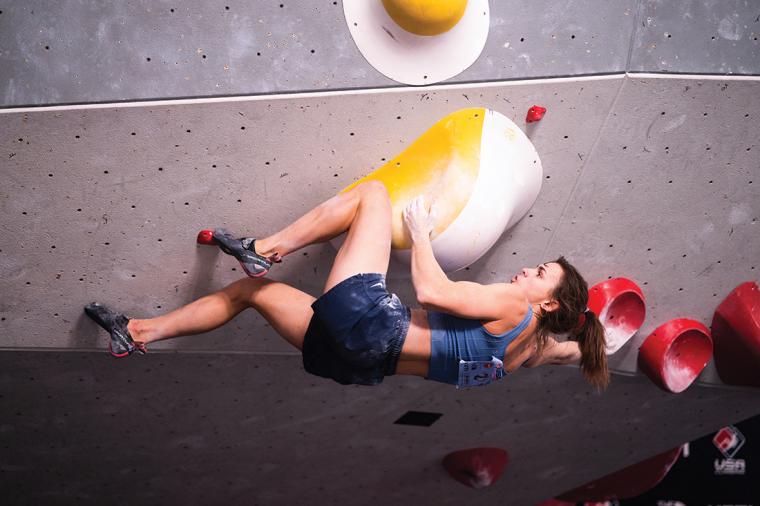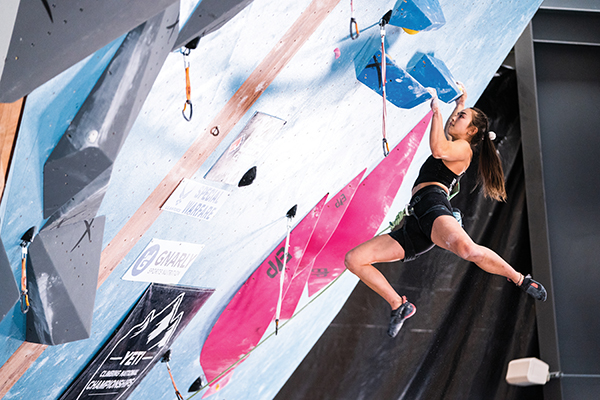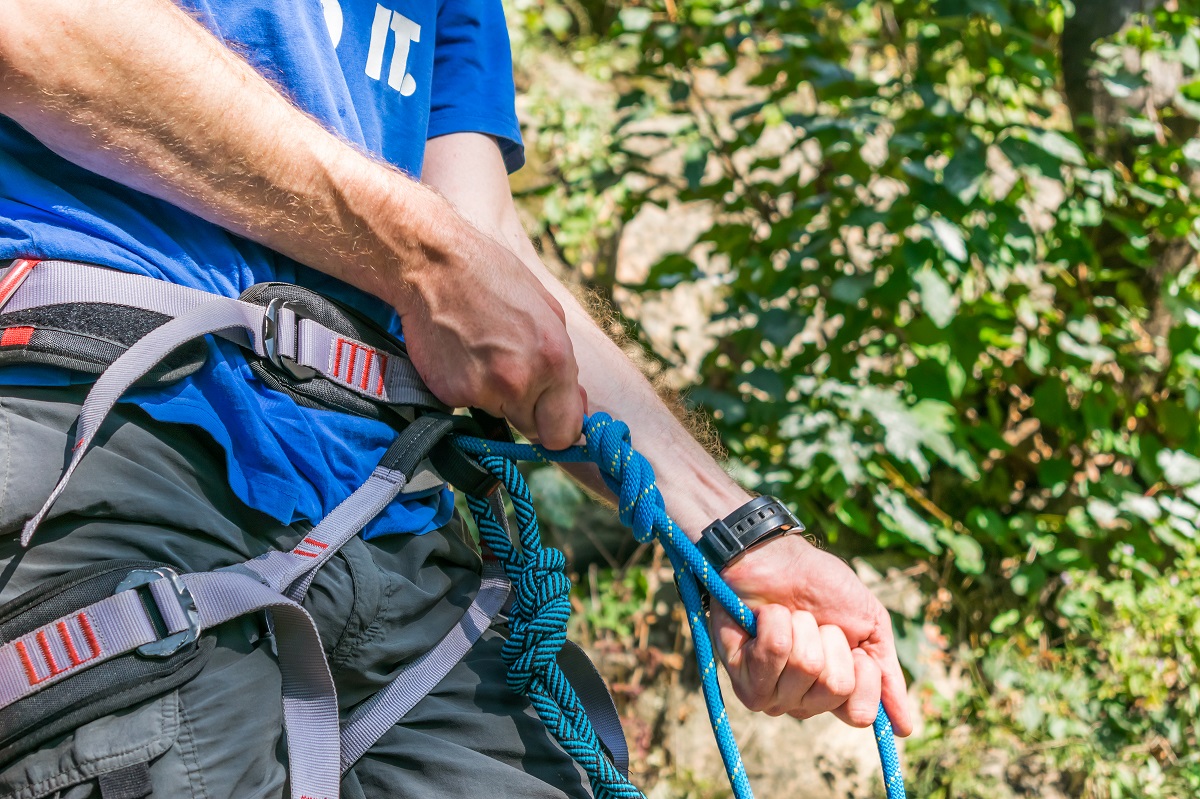
Sport climbing made its debut at the Tokyo Olympics in 2021. And while it was popular before, being on the world’s biggest stage was an enormous boost. USA Climbing, the national governing body of the sport of competition climbing in the United States, has been tracking the growth.
The organization promotes three disciplines:
Bouldering: A form of free climbing performed without ropes or harnesses.
Lead Climbing: The discipline in which athletes attempt to climb as high as they can on a wall measuring more than 15 meters in height within six minutes. The climbers use safety ropes and clip the rope to quickdraws along the route.
Speed Climbing: This discipline pits two climbers against each other in head-to-head competition. Both climbers are secured to safety ropes and attempt to scale a 15-meter-high wall, set at an angle of 95 degrees.
Additionally, USA Climbing promotes its Collegiate and Paraclimbing series of events.
Ben Lowe, Marketing and Communications Director for USA Climbing, met with Sports Destination Management to share his insights and to discuss what is next for the organization.
Popularity Following the Olympics
When climbing went into the Olympics, we saw a definite increase in the number of people trying the sport at the recreational level. It had been increasing in popularity prior to that, but after the Games, that growth just took a substantial jump forward.
In the same way, commercial rock climbing facilities were seeing a lot of activity before 2021 but the Olympics just seemed to throw gas on the fire. Climbing will be on the program for the Games in 2024 in Paris, and in 2028 in Los Angeles so we can look forward to even more exposure.
Growth Among Specific Populations

Climbing has really made some gains but one of the biggest jumps is in the popularity of youth climbing programs. We’re seeing an increasing number of very well structured and organized programs for youth, as well as a lot of good training programs. Kids seem to be responding well to both of these.
One of the things that makes climbing so popular among kids is that it’s a very social sport. It’s not competitive the way other sports are; it’s actually a very supportive environment. Kids tend to work together and encourage one another to get better at it.
There are technically teams, typically associated with each commercial facility, but I would say that the kids are motivated in different ways. Some of them are motivated by competing against the other climbers and some of them are motivated to progress just by competing with themselves and pushing their own boundaries.
Additionally, climbing is a good opportunity to teach kids about the outdoors as a whole. Commercial facilities are using these youth programs as a chance to teach new generations about conservation and introduce them to local and national conservation organizations. We want them to become more skilled, of course, but even more importantly, we want them to learn to respect the outdoors and to leave no trace if or when they decide to head outside. Climbing is an excellent opportunity to learn that and more.
Paraclimbing is also an area that has grown over the last few years, and obviously, we want to continue that trend. Climbing, in addition to being very social, is very inclusive and we are seeing more and more of these programs popping up on the recreational as well as the competitive levels. We’re putting an increasing amount of resources behind that in order to not only maintain but to increase that growth.
In May, USA Climbing hosted an International Paraclimbing World Cup competition in Salt Lake City. Many of the U.S. athletes then went on to compete in a number of other paraclimbing world cup events later that summer hosted in Innsbruck, Austria and Villars, Switzerland.
Gender Participation
Climbing tends to skew a bit toward the male demographic but we are trying to level off those numbers. I know I just said that the sport has always been very inclusive, but we recognize that on face value, it can be a little intimidating if you’re just starting out.
What’s just as important as having more women climbing, however, is having more women involved at the higher levels of the sport. Programs like our women’s routesetter clinics are meant to encourage women to serve as role models for others within climbing gyms. It’s also a way to build confidence in yourself as an athlete and as a member of the sport.
Climbing Gyms vs. Outdoor Climbing
While we don’t know exactly where and how often individuals are climbing, we do know there has been significant growth in commercial climbing gyms. The Climbing Wall Association has statistics that show an eight percent growth in the number of climbing gyms last year; for a niche sport, that’s a really good number. Our membership is just shy of 18,000 but that’s only a small portion of the overall climbing demographic in this country.
Sites for Championship Events

All our USA Climbing events are either held within a climbing gym, or on walls we have custom built to host the competitions. This allows us to bring our events to places that might not necessarily be what someone might consider climbing areas. In late February and early March, our combined 2023 USA Climbing National Team Trials and Paraclimbing National Championship event will be the first event of its kind in the U.S. and will be held at Mesa Rim, which is a climbing gym in Austin, Texas.
The National Team Trials will be the second and final selection event for the Elite series, whereas the Paraclimbing Nationals is the sole selection event for the Paraclimbing series. By the conclusion of both events, top athletes will be designated to represent the U.S. at international World Cup and Paraclimbing World Cup events sanctioned by the International Federation of Sport Climbing (IFSC).
During the first portion of the events, athletes will compete in all three disciplines of climbing – Bouldering, Lead and Speed – featuring the new Boulder & Lead Combined Olympic format over the course of the four-day competition. The 2023 U.S. National Team will be composed of the top five ranked U.S. athletes per gender in each respective discipline including a Boulder & Lead Team after the conclusion of this event. In 2023, athletes from the newly formed Boulder & Lead Team and Speed Team will begin their quest to earn a spot for Team USA at the Paris 2024 Olympics.
Looking Back and Moving Ahead
We have seen consistent increases in our sport even coming out of COVID. Climbing was able to grow in quarantine because it allowed people to work out and challenge themselves, without being right next to one another. People might not have been comfortable going to a traditional fitness facility, but they were able to get outdoors. Climbing is the perfect mixture of social interaction and a physical workout and people really needed both those things.
At USA Climbing, we are looking forward to 2023 and beyond. We’re an organization with a relatively small staff (a little over a dozen people) but we’re strongly supported by a great population of volunteers across the U.S. They will travel to events and provide extra sets of hands to help keep things running. Some are members of gyms or clubs and some, like us, just love the sport and want to see it grow.
More information on USA Climbing and its programs, including upcoming championship events, can be found on our website at usaclimbing.org. SDM

